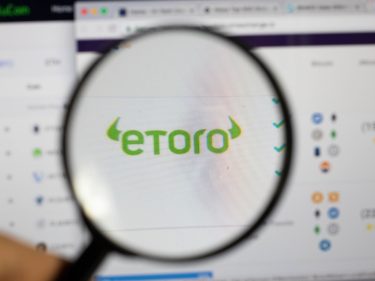It’s interesting to witness the evolution of crypto products as they integrate into real world use-cases beyond being a currency or a store of value.
In today’s issue, Meredith Yarbrough, managing partner and co-founder, La Hoja Capital Partners looks at how bitcoin could serve as part of the collateral for mortgages.
Eric Tomaszewski from Verde Capital Management provides considerations when looking at this model in Ask an Expert.
You’re reading Crypto for Advisors, CoinDesk’s weekly newsletter that unpacks digital assets for financial advisors. Subscribe here to get it every Thursday.
Homeownership has been central to the American dream for decades, but the risks for both borrowers and lenders remain consistent across market cycles. Borrowers face property market volatility, negative equity, illiquidity and the ongoing burden of taxes, insurance and maintenance. Lenders, meanwhile, are exposed to borrower defaults, interest rate risk, prepayment and economic downturns.
While innovative credit managers have begun integrating bitcoin into commercial debt structures, the question arises: can this approach be adapted to mortgages to reduce risk for both borrowers and lenders while capitalizing on bitcoin’s growth potential?
Your home: A highly concentrated risk
For most Americans, homeownership represents a concentrated financial risk, with the majority of their wealth tied up in a single asset. Property values fluctuate based on market conditions, inflation and local factors. Homeowners also bear ongoing costs such as taxes, insurance and maintenance, making it difficult to quickly generate liquidity in an emergency.
Bitcoin: A liquid, appreciating asset
Bitcoin’s fixed supply and growing adoption make it a compelling asset to include in a mortgage collateral package. Unlike real estate, bitcoin is highly liquid and easily convertible to cash, allowing homeowners quicker access to funds when needed. Its value is driven by scarcity, decentralized nature and historically strong long-term appreciation, providing potential benefits to both borrowers and lenders.
Bitcoin in the mortgage collateral package
Integrating bitcoin into a mortgage requires a shared, long-term view between the borrower and the lender. While bitcoin’s short-term volatility is well-known, its long-term appreciation presents a significant opportunity for value growth. Borrowers and lenders can benefit from this growth while sharing the associated risks.
In this model, the mortgage covers both the cost of the home and an allocation for purchasing Bitcoin. The lender manages the Bitcoin portion, and as its value appreciates, profits are shared between both parties. The borrower’s stake in the bitcoin increases over time, incentivizing long-term homeownership and reducing the likelihood of early repayment.
Benefits for lenders and borrowers
This hybrid collateral structure provides notable advantages:
Reduced risk and diversified collateral for lenders: Bitcoin’s inclusion diversifies collateral portfolios, reducing lenders’ exposure to real estate market downturns. Its non-correlation with real estate provides a hedge, improving loan stability.
Lower interest rates and favorable terms: Bitcoin’s growth potential offsets lender risk, allowing for more favorable loan terms, including lower interest rates or shorter loan durations.
Shared growth potential: Both parties benefit from bitcoin’s appreciation. Lenders can enhance their portfolios, while borrowers gain access to growing bitcoin equity, which can be used for liquidity needs or home repairs. This alignment fosters a long-term financial partnership.
Enhancing homeownership sustainability with appreciating assets: Traditionally, homes require significant financial outlays for taxes, insurance and maintenance. By integrating bitcoin, homeowners can leverage Bitcoin’s growth to offset these ongoing costs, turning what is often a financial burden into a more sustainable model.
A new future for homeownership
By incorporating bitcoin as collateral, homeowners gain access to an appreciating asset that can help cover ongoing expenses like repairs and renovations, without dipping into personal savings or taking on additional debt. This added flexibility makes homeownership more financially sustainable, with bitcoin serving as a reserve for inevitable costs.
At a community level, the positive effects could be profound. Homeowners benefiting from bitcoin’s growth would have more resources to invest in maintaining their properties, improving the overall health and resilience of neighborhoods. This could lead to healthier, more attractive communities and new possibilities for sustainable homeownership.
Incorporating bitcoin into mortgage structures provides a more flexible, growth-oriented relationship for both lenders and borrowers. As bitcoin continues to gain traction as a financial asset, its role in reshaping traditional mortgages could mark a significant advancement for homeownership and the American dream.
Q. What are the similarities amongst Bitcoin and the American Dream?
At its core, the American dream represents the idea that anything is possible through hard work and a will to succeed. Bitcoin represents individuals taking control of their financial future without the reliance on centralized institutions. It’s very much about promoting self sovereignty and freedoms.
Central to the American dream is the idea that everyone has an equal opportunity to succeed. With bitcoin, anyone with an Internet connection has the ability to participate and get access.
America has innovated and progressed because of a fire of entrepreneurial spirit. Bitcoin embodies a technology that progresses us towards the next iteration of humanity.
Q. How can I utilize BTC to get a mortgage in the US market?
I would suggest taking a step back. Everything starts with assessing goals and priorities. It’s about building a thoughtful plan without concentration in any specific investments. I am of the mindset that too much of anything is a bad thing which is why balancing a plan with digital assets and traditional assets can actually be really strategic and fruitful if done correctly.
If someone is over-concentrated within BTC, it could be a conversation about de-risking their digital asset portfolio or setting realistic expectations with timelines associated with the goal of buying a home. Everything comes back to being mindful about planning so the assets or investments are utilized effectively. It’s also important to remind yourself that rent in many instances can actually be a better financial decision for a client’s needs and the overall plan.
According to the ETF Institute, out of 525 funds launched in 2024, 13 out of the top 24 best-performing ETFs are related to bitcoin and ether.
Analysts are watching bitcoin’s price, as historically October, also known as Uptober, is a good month for the digital currency.
The UAE has exempted cryptocurrency transfers and conversions from value-added tax, positioning itself as a more crypto-friendly jurisdiction for digital asset transactions.




